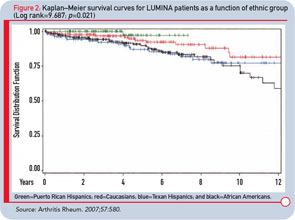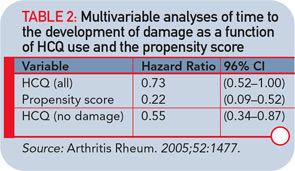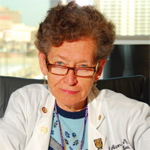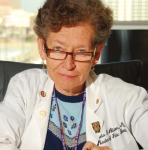To develop a research study on lupus with a significant number of Hispanic subjects, I called upon a former UAB faculty member, Dr. John Reveille of the University of Texas Houston (UTH). Working in Houston, John had firsthand experience with seriously ill Hispanic patients with lupus, and his enthusiastic support was crucial for our successful grant application submission. Of course, the beginnings of the study were somewhat rocky. After the initial and justified exhilaration of receiving the grant came the arduous job of organizing the study for which, in retrospect, I can say we were not fully prepared. As occurs in parenthood, we learned a lot on the job itself (what instruments to use, what variables to include, the frequency of the study visits, what laboratory tests we could afford, and the like, and more importantly, how to best use this resource to advance our knowledge of lupus, once constituted).

In April 1994, patient enrollment began simultaneously in Alabama and Texas. A few years later, we were told that LUMINA did not quite represent the Hispanic population in the United States and that we should include a Puerto Rican patient group. This sort of pressure/directive was in fact instrumental not only in enlarging our cohort but also in teaming us up with a young and energetic investigator from the University of Puerto Rico (UPR), Dr. Luis Vilá, with whom I have developed a very close relationship. By late 2008, the LUMINA cohort had over 600 patients (220 Hispanics from Texas [n=118] and the island of Puerto Rico [(n=102], and African Americans [n = 234] and Caucasians [n=181] from both Alabama and Texas) and had contributed to the literature quite extensively (75 published original research papers and numerous abstracts as well as editorials, reviews, and commentaries); about 75% of the African Americans and Caucasians were recruited in Alabama, while the remaining 25% were recruited in Texas. In all instances, these were patients with relatively recent-onset lupus (five years of disease duration as the maximum) being cared for their disease (or presenting for the first time to be cared for) either at UAB, UTH, or UPR.
The next best thing that happened to LUMINA is the support we obtained from an organization called Rheuminations (initially thru the Cornell Lupus Center of Excellence), with which I was able to fund several Latin American and Spaniard research fellows. Rheuminations is a nonprofit private foundation created by Katherine and Arnie Snider with the specific goal of improving the lives of patients with lupus and those who care for them through education and research. By the time I retired in 2009, Rheuminations had developed the STELLAR program (Supporting Training Efforts in Lupus for Latin American Rheumatologists) at UAB, and through it I was able to fund the last four of 10 research fellows who worked with me in the LUMINA cohort. These fellows brought enthusiasm and dedication as well as many new ideas that we explored with the expert and unconditional guidance of Dr. Jerry McGwin from Epidemiology at UAB. These fellows were from Mexico (Drs. América Uribe, Mónica Fernández, and Sergio Durán), Argentina (Drs. Sergio Toloza, Ana Bertoli, and Guillermo Pons-Estel), Chile (Dr. Paula Burgos), Colombia (Dr. Luis Gonzales), Perú (Dr. Rosa Andrade), and Spain (Dr. Jaime Calvo-Alén).

The fellows in the STELLAR program and the ones funded through the Cornell Lupus Center of Excellence were all young and eager to prove themselves as investigators. Without exception, they worked long hours and demonstrated great commitment to the study, developed their own research projects utilizing the database from the cohort, and wrote and rewrote their manuscripts numerous times—a significant challenge, not only because of their relative inexperience in this form of writing, but also because they, like me, have Spanish as their first language. These fellows, along with the clinical fellows that worked in the cohort (Drs. Maria Danila and Sumapa Chaiamnuay), made my last years at UAB incredibly rewarding. I will treasure the experience with them and consider it the highlight of my academic career at UAB.



